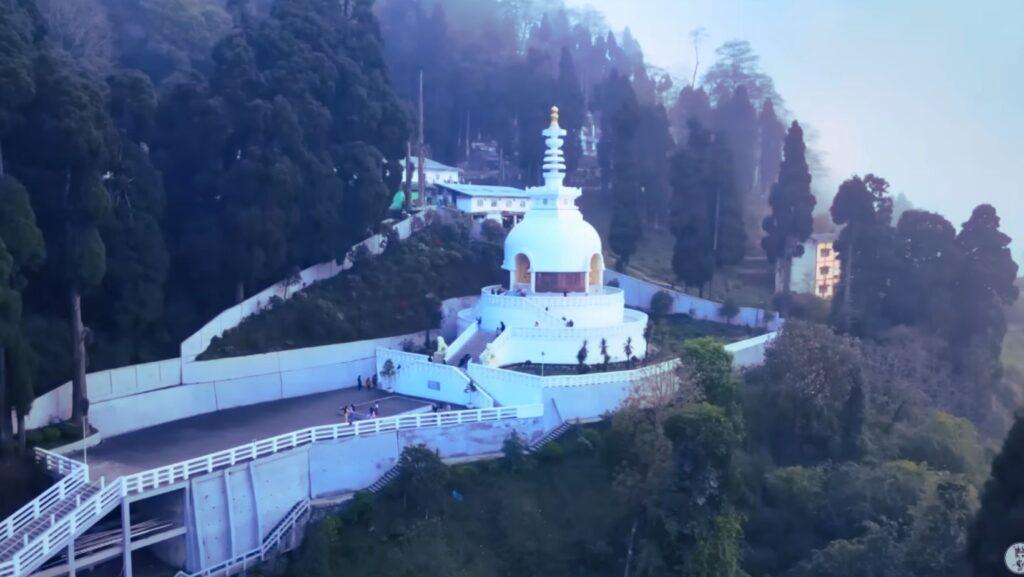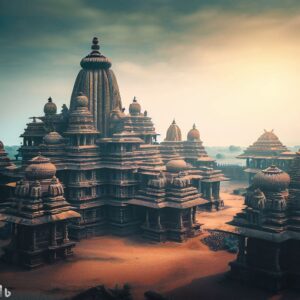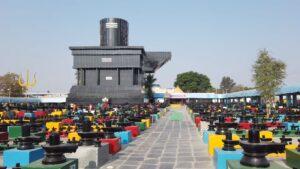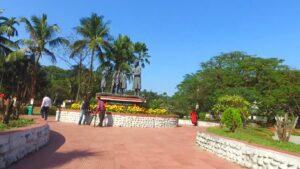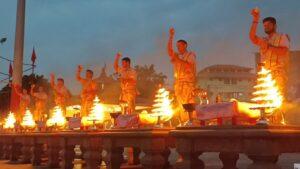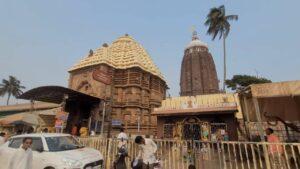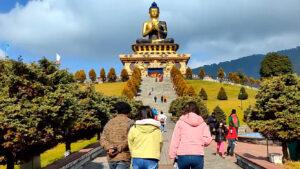Japanese Peace Pagoda, Darjeeling
The Japanese Peace Pagoda in Darjeeling is a stunning white structure that stands as a symbol of harmony and peace. It is one of the many peace pagodas that were built by the Japanese Buddhist monk Nichidatsu Fujii, who was inspired by the teachings of Mahatma Gandhi.
The pagoda showcases the four avatars of Lord Buddha and offers a panoramic view of the Darjeeling hills and the snow-capped mountains. The pagoda is also surrounded by a beautiful Japanese temple and a well-maintained garden, where visitors can meditate and relax.
Peace Pagoda, Darjeeling: History
- Nichidatsu Fujii was a disciple of Nichiren, a 13th-century Japanese Buddhist reformer. He met Mahatma Gandhi in 1931 and was deeply moved by his non-violent struggle for India’s independence. He decided to dedicate his life to spreading the message of peace and compassion by building peace pagodas around the world.
- The foundation stone of the Peace Pagoda in Darjeeling was laid by Fujii on 3 November 1972. He was assisted by local monks and nuns of his order, as well as volunteers from different countries. The construction took 20 years to complete, and the pagoda was finally inaugurated on 1 November 1992.
- The pagoda is designed by M. Ohka, a Japanese architect who also designed many other peace pagodas. The pagoda has a height of 28.5 meters and a diameter of 23 meters. It has four niches, each containing a statue of Buddha representing his four aspects: birth, enlightenment, teaching, and death. The statues are made of sandstone and are carved by Japanese sculptors.
- The Peace Pagoda in Darjeeling is one of the 80 peace pagodas that Fujii and his followers have built in different countries, such as Japan, India, Sri Lanka, Nepal, Myanmar, Thailand, Vietnam, Cambodia, Indonesia, Australia, New Zealand, United States, Canada, United Kingdom, France, Germany, Austria, Hungary, and Mongolia.
- The Peace Pagoda in Darjeeling is located on the slopes of the Jalapahar hills, a few kilometers from the town of Darjeeling. It is surrounded by a beautiful Japanese temple and a well-maintained garden, where visitors can meditate and relax. The pagoda offers a panoramic view of the Darjeeling hills and the snow-capped mountains.
Peace Pagoda, Darjeeling Architecture
The Peace Pagoda in Darjeeling was designed by M. Ohka, a Japanese architect who also designed many other peace pagodas. The construction began in 1972 and was completed in 1992. The pagoda has a height of 28.5 meters and a diameter of 23 meters. It has four niches, each containing a statue of Buddha representing his four aspects: birth, enlightenment, teaching, and death. The statues are made of sandstone and are carved by Japanese sculptors.
Peace Pagoda, Darjeeling Timing, Entry Fees
Peace Pagoda, Darjeeling is a beautiful and serene place to visit if you are interested in Buddhist culture and architecture. It is open from 4:30 am to 7:00 pm daily, and there is no entry fee required. You can also join the prayer sessions that are held from 4:30 am to 6:00 am and 4:30 pm to 6:30 pm. The Peace Pagoda showcases the four avatars of Lord Buddha and offers a stunning view of the Darjeeling hills and the snow-capped mountains.
